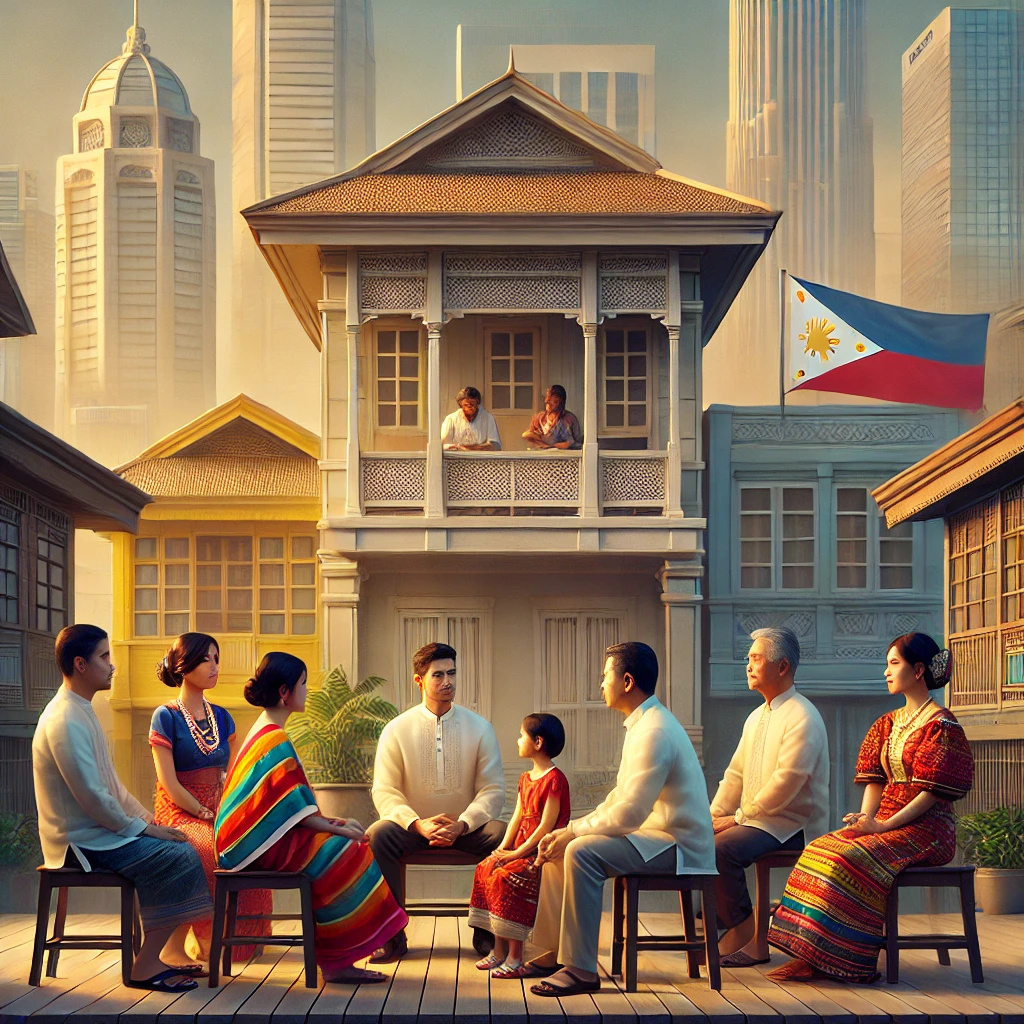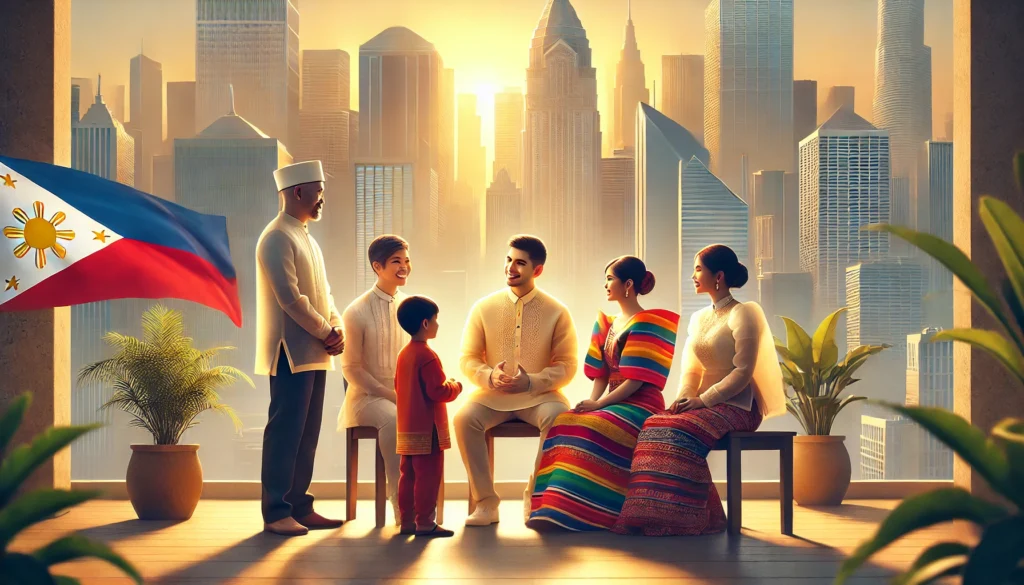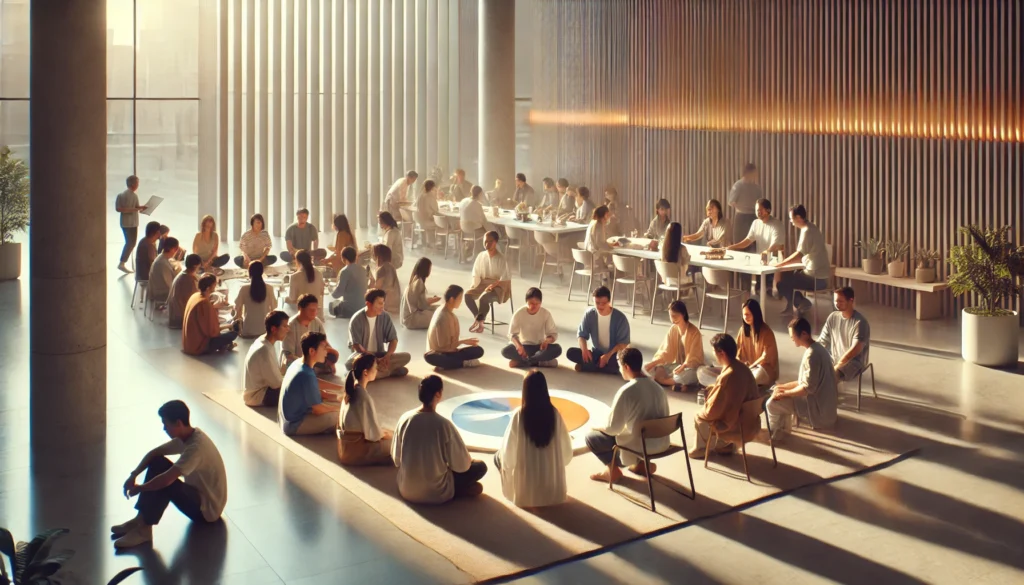The Philippines, an archipelagic nation in Southeast Asia, has a rich and complex cultural heritage shaped by centuries of indigenous traditions, colonial influences, and modern globalization. At the heart of Filipino society lies a unique blend of Eastern and Western values, creating a dynamic and sometimes challenging cultural landscape. This blog explores the intricate balance between Filipino and Western values, examining the historical context, key cultural differences, and the ongoing challenges faced by Filipinos in navigating these often-competing worldviews. As the country continues to evolve in an increasingly interconnected world, understanding this cultural dichotomy becomes crucial for both Filipinos and those seeking to engage with Philippine society.
Historical Context
Colonial Legacy and Cultural Fusion
The Philippines’ history of colonization has played a significant role in shaping its cultural identity. For over three centuries, the country was under Spanish rule, followed by a brief period of American colonization. This prolonged exposure to Western influences has left an indelible mark on Filipino society, blending with pre-existing indigenous values to create a unique cultural tapestry. The Spanish colonial period introduced Catholicism, which became deeply ingrained in Filipino culture, while the American era brought English language education and democratic ideals. These Western influences did not entirely supplant traditional Filipino values but instead created a complex interplay between the two. Understanding this historical context is crucial for appreciating the challenges Filipinos face in balancing their cultural heritage with the adopted Western ideals.
Post-Colonial Identity Formation
After gaining independence in 1946, the Philippines embarked on a journey of nation-building and identity formation. This process involved reconciling the country’s indigenous roots with its colonial past and newly acquired Western-style institutions. The post-colonial era saw a renewed interest in pre-colonial Filipino culture, as well as efforts to forge a distinct national identity. However, the deep-seated Western influences remained, creating a society that often found itself caught between traditional Asian values and more modern, Western-oriented perspectives. This cultural duality has been both a source of richness and tension, as Filipinos continue to grapple with questions of identity and values in the face of rapid globalization and modernization.
Key Filipino Values
Family-Centeredness
At the core of Filipino culture lies a deep-seated commitment to family. This value extends beyond the nuclear family to include extended relatives and even close friends who are often considered family. The Filipino concept of “family” emphasizes strong intergenerational ties, mutual support, and collective decision-making. Children are expected to care for their aging parents, and family members often pool resources to support one another. This family-centric approach contrasts with the more individualistic tendencies of Western societies, where personal independence is often prioritized. The challenge for many Filipinos lies in maintaining these strong family bonds while adapting to more Western-influenced work environments and social structures that may not always accommodate such close-knit family dynamics.
Respect for Elders and Authority
Filipino culture places a high premium on respect for elders and those in positions of authority. This value is deeply rooted in the country’s pre-colonial traditions and has been reinforced by centuries of hierarchical social structures. Respect is shown through various cultural practices, such as using honorific terms, seeking advice from elders, and deferring to authority figures in decision-making processes. While this value promotes social harmony and intergenerational wisdom transfer, it can sometimes clash with Western notions of egalitarianism and individual assertiveness. Young Filipinos, particularly those exposed to Western education and media, may find themselves struggling to balance their cultural inclination to respect authority with the desire to express independent thoughts and challenge established norms.
Hiya and Pakikisama
Two interrelated values that significantly influence Filipino social behavior are “hiya” (shame or loss of face) and “pakikisama” (smooth interpersonal relationships). Hiya refers to the sense of propriety and social shame that regulates behavior, encouraging individuals to act in ways that do not bring dishonor to themselves or their families. Pakikisama emphasizes the importance of maintaining harmonious relationships within the community, often through conformity and conflict avoidance. These values contribute to a social environment that prioritizes group cohesion and face-saving over individual desires or confrontational problem-solving. While these concepts promote social harmony, they can sometimes conflict with Western values of direct communication and individualism, creating challenges for Filipinos operating in more Westernized professional or social contexts.
Key Western Values
Individualism and Personal Achievement
Western societies, particularly those influenced by Anglo-American culture, place a strong emphasis on individualism and personal achievement. This value system encourages individuals to pursue their own goals, express their unique identities, and take personal responsibility for their successes and failures. The focus on individual accomplishment often translates into a competitive spirit in education and the workplace. This individualistic approach can be challenging for Filipinos accustomed to more collectivist values, where personal achievements are often viewed in the context of family or community benefit. Navigating this difference requires Filipinos to find a balance between pursuing individual aspirations and maintaining their sense of communal responsibility.
Direct Communication and Assertiveness
Western communication styles tend to value directness, assertiveness, and explicit expression of thoughts and feelings. This approach contrasts with the more indirect, non-confrontational communication style typical in Filipino culture. In Western contexts, individuals are often encouraged to speak their minds, debate ideas openly, and advocate for themselves. For Filipinos, adapting to this more direct style of communication can be challenging, as it may feel at odds with their cultural inclination towards preserving harmony and avoiding conflict. Learning to navigate these different communication expectations is crucial for Filipinos engaging in Western-style educational, professional, or social environments.
Equality and Meritocracy
Western societies often emphasize the ideals of equality and meritocracy, where individuals are judged based on their abilities and achievements rather than their social status or family background. This value system promotes the notion that anyone can succeed through hard work and talent, regardless of their origin. While these principles can create opportunities for social mobility, they may sometimes conflict with traditional Filipino values that place importance on social hierarchies and familial connections. Filipinos may find themselves grappling with the tension between their cultural inclination to respect established social structures and the Western emphasis on individual merit and equal opportunity.
Challenges in Balancing Values
Generational Gaps
One of the most significant challenges in balancing Filipino and Western values arises from generational differences. Older generations in the Philippines tend to adhere more closely to traditional Filipino values, while younger Filipinos, exposed to global media and often educated in Western-style institutions, may lean towards more Westernized perspectives. This generational gap can lead to conflicts within families and communities, as different age groups struggle to understand and accommodate each other’s worldviews. The challenge lies in finding ways to bridge these generational divides, fostering intergenerational dialogue and mutual understanding to create a harmonious blend of traditional and modern values.
Professional Environment Dynamics
In the professional sphere, the clash between Filipino and Western values becomes particularly evident. Many Filipino companies, especially those with international connections, adopt Western-style management practices and work cultures. This can create tension for employees who must navigate between their ingrained Filipino values and the expectations of a more Westernized work environment. For instance, the Filipino tendency towards indirect communication and conflict avoidance may be at odds with Western expectations of assertiveness and direct feedback. Similarly, the strong Filipino emphasis on personal relationships in the workplace may conflict with Western notions of professionalism and meritocracy. Finding a balance that respects both cultural perspectives while maintaining productivity and fairness in the workplace remains an ongoing challenge.
Education System Conflicts
The Philippine education system presents another arena where the balance between Filipino and Western values is constantly negotiated. While the country’s educational framework is largely modeled on Western systems, particularly American, it operates within a distinctly Filipino cultural context. This creates challenges in curriculum development, teaching methodologies, and student-teacher interactions. For example, the Western emphasis on critical thinking and questioning authority may conflict with the Filipino value of respect for elders and established knowledge. Additionally, the competitive, individualistic nature of Western-style education can clash with Filipino collectivist values. Educators and policymakers face the ongoing challenge of developing an educational approach that prepares students for a globalized world while preserving and promoting Filipino cultural values.
Impact on Identity and Social Cohesion
Cultural Identity Crisis
The constant negotiation between Filipino and Western values can lead to a sense of cultural identity crisis, particularly among younger Filipinos. As they are exposed to both traditional Filipino values at home and Western influences through media, education, and globalization, many struggle to define their cultural identity. This internal conflict can manifest in various ways, from a rejection of traditional values in favor of more Westernized perspectives to a hyper-attachment to Filipino culture as a form of resistance against Western influence. The challenge lies in fostering a cultural identity that successfully integrates both Filipino and Western elements, allowing individuals to navigate both worlds confidently without feeling a sense of cultural dislocation.
Social Cohesion and National Unity
The balancing act between Filipino and Western values also has implications for social cohesion and national unity. As different segments of society align themselves with varying degrees of traditional or Westernized values, it can lead to social fragmentation and misunderstanding between groups. This divide can be particularly pronounced between urban and rural areas, where exposure to Western influences may differ significantly. Maintaining a sense of national unity while acknowledging and respecting diverse cultural perspectives becomes a crucial challenge. The task for Filipino society is to find common ground that allows for the coexistence of different value systems while preserving a shared sense of national identity.
Strategies for Balancing Values
Cultural Education and Awareness
One key strategy for addressing the challenges of balancing Filipino and Western values is promoting cultural education and awareness. This involves fostering a deeper understanding of both Filipino cultural heritage and Western influences among all segments of society. Schools, media, and community organizations can play crucial roles in this effort by:
- Incorporating comprehensive cultural studies into the educational curriculum
- Promoting intergenerational dialogue and knowledge sharing
- Encouraging critical reflection on the origins and implications of different value systems
- Celebrating cultural diversity and promoting intercultural understanding
By increasing awareness and appreciation of both Filipino and Western values, individuals can make more informed choices about how to integrate these different perspectives into their lives.
Adaptive Integration
Rather than viewing Filipino and Western values as mutually exclusive, an adaptive integration approach seeks to find synergies and create a harmonious blend. This strategy involves:
- Identifying complementary aspects of Filipino and Western values
- Developing flexible cultural frameworks that can adapt to different contexts
- Encouraging innovation in cultural practices that combine the best of both worlds
- Promoting role models who successfully navigate between Filipino and Western value systems
The goal is to create a cultural environment where individuals can draw upon both Filipino and Western values as resources for navigating the complexities of modern life, rather than feeling torn between competing worldviews.
Policy and Institutional Support
Addressing the challenges of balancing Filipino and Western values requires support at the policy and institutional levels. This can include:
- Developing culturally sensitive policies in education, workplace regulations, and social services
- Promoting research on cultural integration and its impact on Filipino society
- Supporting cultural preservation efforts alongside modernization initiatives
- Encouraging cross-cultural exchange programs to foster global understanding while strengthening local cultural identity
By providing institutional support for cultural integration efforts, the Philippines can create a more conducive environment for individuals and communities to navigate the complexities of balancing different value systems.
Data and Statistics
To provide a clearer picture of the cultural landscape in the Philippines, here are some relevant statistics (as of 2017):
| Category | Data Point | Value |
|---|---|---|
| Religion | Catholic Population | 80.6% |
| Language | English Proficiency Ranking (EF EPI) | 15th out of 80 countries |
| Education | Tertiary Education Enrollment Rate | 35.7% |
| Economy | Overseas Filipino Workers (OFWs) | 2.3 million |
| Technology | Internet Penetration Rate | 60% |
| Demographics | Median Age | 23.5 years |
These statistics highlight the complex interplay of traditional Filipino culture and Western influences in various aspects of Philippine society.
Conclusion
Balancing Filipino and Western values remains an ongoing challenge for Philippine society, touching every aspect of life from personal relationships to national identity. As the country continues to engage with the global community, the need to navigate between traditional cultural norms and Western-influenced modernity becomes increasingly pressing. The key to addressing this challenge lies in fostering cultural awareness, promoting adaptive integration, and providing institutional support for cultural negotiation efforts. By embracing the richness of both Filipino and Western values, the Philippines has the potential to develop a unique cultural synthesis that can serve as a model for navigating the complexities of globalization while maintaining a strong sense of national identity.
As the country moves forward, it is crucial to recognize that the balance between Filipino and Western values is not a fixed point but a dynamic process. It requires ongoing dialogue, reflection, and adaptation at both individual and societal levels. By engaging thoughtfully with this cultural balancing act, Filipinos can forge a path that honors their rich heritage while embracing the opportunities of an interconnected world. The journey of cultural integration is complex and sometimes challenging, but it also offers the promise of a vibrant, diverse, and resilient society capable of thriving in the global arena while remaining true to its roots.
Disclaimer: This blog post is based on information available up to 2017. Cultural dynamics and statistics may have changed since then. We encourage readers to consult more recent sources for the most up-to-date information. If you notice any inaccuracies in this post, please report them so we can correct them promptly.




